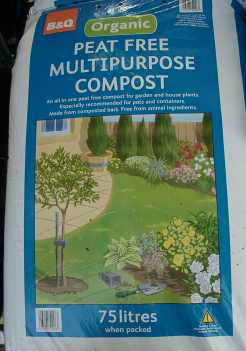
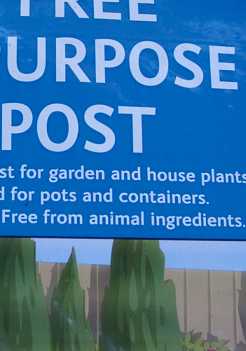
VV subscriber Graham Cole has worked on several large gardens since 1978. He is a strong supporter of the Vegan Organic Network, and will be the presenter on their forthcoming videos on stockfree organic agriculture that are being filmed this summer.
As I write (May 31st) the really warm weather has arrived, all the tender plants are in the ground such as Runner Beans, Courgette, Sweet Corn, Squash and Dahlias and summer is underway! At this time we are already looking ahead to the winter crops with the brassicas sown in early May being planted out during June – Purple and White Sprouting Broccoli, Savoy Cabbage (particularly January King), Kale and Brussels, which I sow a bit before the others and plant out mid to late May here in the south. These are sown under cover (frame or greenhouse) to be good sized plants – the reusable plastic plant modules (24 squares) are good for plant raising. This brings us to the subject of seed/potting composts where a good medium is required to get plants off to a good start when the weather is cold and/or wet, and in the case of slug/snail vulnerable plants, results in more robust plants able to get away with less or no damage when finally planted out. Food crops need warmth and darkness to germinate and then good light on a south facing windowsill, cold frame or, best of all, a greenhouse, before being planted outside.
Composts
The problem with most of the available composts on the market is that they contain peat, chemical fertilizers and/or so-called organic fertilizers which means animal wastes such as bonemeal, blood, fishmeal and poultry manure. For many years I made my own based on sieved loam and sieved garden compost, leafmould, sharp sand and seaweed meal with some inevitable weed seedlings coming up! Now as ecologically-minded vegans we can obtain a peat-free, chemical-free organic multipurpose compost with no animal ingredients from B&Q based on composted bark and plant wastes. I have tried it for the last 2 seasons and got good results – however for seed sowing adding sharp sand gives a lighter, open medium. I can recommend it, it comes in blue and white 20, 50 or 75 litre bags and is very well priced at £3.78 for the 75 litre bag, the same price as B&Q's 75 litre bag of non-organic peat-based compost, in fact. No, I don't have shares with B&Q!! Composted municipal waste (i.e. grass and tree cuttings) is also available in some areas – try your local recycling centre. In Hampshire, three 30 litre bags cost £5.
 |
 |
| B&Q organic compost | ...animal-free |
For many purposes I also use pelleted hop manure – a useful by-product from brewers and less smelly than the spent hops I used to obtain! This can be added to potting mixtures for greedier plants such as sweet peppers which I grow in large pots on the greenhouse staging. I still also make my own potting mixture for some things, now adding the B&Q multipurpose instead of leafmould, or when I run out of it. The use of ordinary garden soil can't be recommended for seed and potting – a friable, open but also moisture-retentive medium with good nutrients is what is required. The use of seaweed meal can add valuable trace elements essential for plant and human health – if our soils are nutrient-full and healthy the plants will be too when we eat them. The heavy use of artificial fertilizers, monocultures and soil damaging practices have left depleted soils with lower nutrient levels in food compared to 40 years ago.
Summer Plantings + Green Manures
At this time, outside sowings of lettuce, carrots, radish, beetroot (the yellow variety is also nice) can continue, and July is the time to sow Chinese vegetables such as Chinese cabbage (Early Jade Pergoda). Green Manures should be considered whenever an area of ground is free for six weeks or more, and is of great value through the winter. Sowings can be made anytime between March/April to Sept/Oct with the most valuable ones being the legumes which have the ability to take up nitrogen from the air – tapping a free source of fertility. They also provide the most dense ground cover so I mainly use Trefoil, Clover (Kent White is good low growing for intercropping or understorey), Winter Tares (slower growing but good cover if established from early autumn sowings) and even Alfalfa, which can be cut for compost material. All can be cut during good growing seasons to provide useful bulk for the compost heap – just last week (late May) our over-wintering Tares were cut to the ground before flowering and the ground was lightly cultivated for the next summer crop. Phacelia, although not a legume, establishes quickly and will overwinter and give some good ground cover – dig in before flowering. I also have patches of it which I let flower as an excellent attractant to beneficial insects and bees. Buckwheat can do the same.
So, bare soil can and should be covered, and green manure plants will benefit the soil – replacing soil nutrients, improving soil structure and increasing humus content, the lifeblood of the soil. Nutrients which would otherwise be washed away are taken into the plants and then released when the green manure is cut down (when still soft and not "woody") and turned in to the top six inches of the soil.
Strawberries
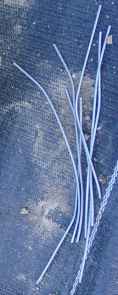 |
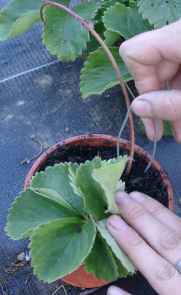 |
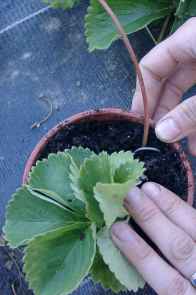 |
| Galvanised wire used for pegs | Pegging down the plantlet on the end of the runner | Runner nicely pegged |
Good new plants can be produced by pegging the ends of the runners of existing strawberry plants in June/July into separate 3½ inch flowerpots filled with compost and sunken into the surrounding soil. Make sure the compost doesn't dry out. The plants produced from runners in this way should be severed from the parent plant, carefully taken out of the flowerpots, and planted in a new strawberry bed 18 inches apart in rows separated by 2 feet by the end of August to get good-sized plants for the next season. Finally, have a good growing, harvesting and eating summer! I'm organising the Vegan Organic Farm Visit at Tolhurst Organic Produce this year (21st Sept 2003), so I'll perhaps see some of you there.
Useful Information
Vegan Organic Network, Plants for a Future, and Movement for Compassionate Living.
Related Vegan Views articles...
Cross-reference: Growing Fruit & Veg